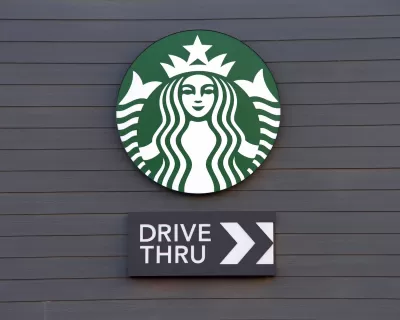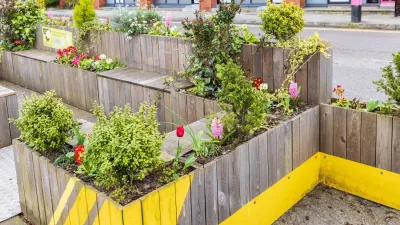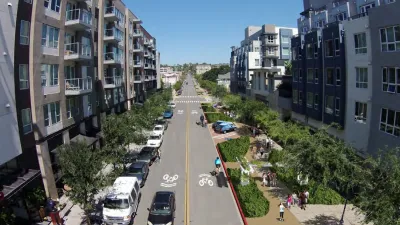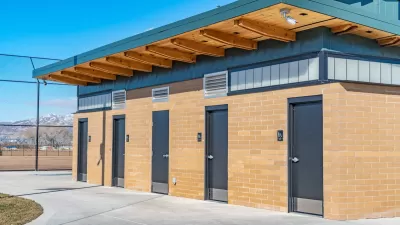Starbucks is shifting to more drive-throughs and less comfy armchairs, but that doesn’t mean the demand for common spaces outside of home and work is waning.

For years, a local Starbucks coffeeshop was a welcome respite for students, freelance workers, and others seeking a comfortable hangout with a clean bathroom. While Starbucks is a private business, it was once common for patrons to sit for hours while making only a couple of purchases. This made Starbucks and its ilk a valuable ‘third place,’ a communal space separate from home or work where social interactions happen.
“These places could be anything from neighborhood watering holes to bookstores, barbershops, community centers or even stoops,”write James Rojas and John Kamp in Strong Towns. By 2022, Starbucks and other businesses are shifting to a new model: “Across the country, cozy lounge chairs were replaced with metal stools — where seating wasn’t done away with altogether. Bathrooms, outlets and tables also disappeared. The company even departed from its 1990s ethos and promised to outfit 90% of new locations with “state-of-the-art” drive-thrus.”
The authors quote Nathaniel Meyersohn, who wrote that Starbucks is “choosing the transactional over the experiential,” explicitly redefining the third place to include digital technology, reducing the importance of the physical space. “The Starbucks where you studied for finals with your classmates, recovered from that awkward first date, won a chess match and took that job interview no longer exists. It’s now a conveyor belt where speed rules and the ideal customer experience is spending as little time in the store as possible.”
While this could seem as a harbinger of doom for other third places, Rojas and Kamp note that other urban cafes, parks, and pocket plazas, many created during the pandemic, are thriving; “the appetite for traditional, physical third places hasn’t disappeared.”
FULL STORY: From Hang Out To Hurry: Why Starbucks Wants To Redefine “Third Place”

Planetizen Federal Action Tracker
A weekly monitor of how Trump’s orders and actions are impacting planners and planning in America.

Congressman Proposes Bill to Rename DC Metro “Trump Train”
The Make Autorail Great Again Act would withhold federal funding to the system until the Washington Metropolitan Area Transit Authority (WMATA), rebrands as the Washington Metropolitan Authority for Greater Access (WMAGA).

The Simple Legislative Tool Transforming Vacant Downtowns
In California, Michigan and Georgia, an easy win is bringing dollars — and delight — back to city centers.

The States Losing Rural Delivery Rooms at an Alarming Pace
In some states, as few as 9% of rural hospitals still deliver babies. As a result, rising pre-term births, no adequate pre-term care and "harrowing" close calls are a growing reality.

The Small South Asian Republic Going all in on EVs
Thanks to one simple policy change less than five years ago, 65% of new cars in this Himalayan country are now electric.

DC Backpedals on Bike Lane Protection, Swaps Barriers for Paint
Citing aesthetic concerns, the city is removing the concrete barriers and flexposts that once separated Arizona Avenue cyclists from motor vehicles.
Urban Design for Planners 1: Software Tools
This six-course series explores essential urban design concepts using open source software and equips planners with the tools they need to participate fully in the urban design process.
Planning for Universal Design
Learn the tools for implementing Universal Design in planning regulations.
Smith Gee Studio
City of Charlotte
City of Camden Redevelopment Agency
City of Astoria
Transportation Research & Education Center (TREC) at Portland State University
US High Speed Rail Association
City of Camden Redevelopment Agency
Municipality of Princeton (NJ)





























